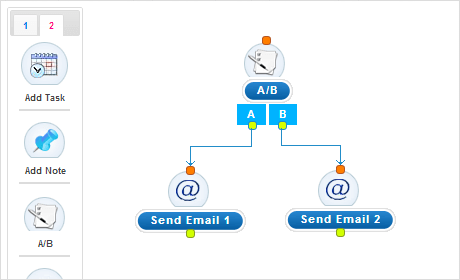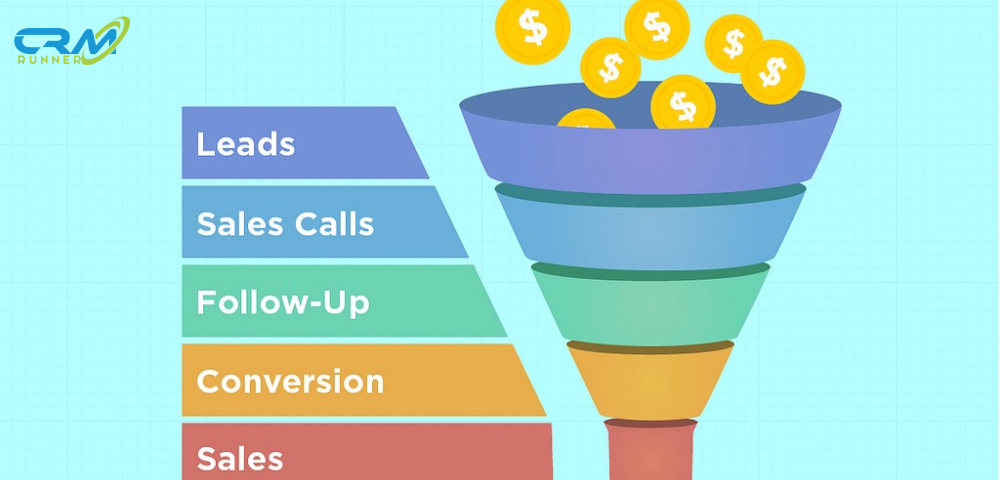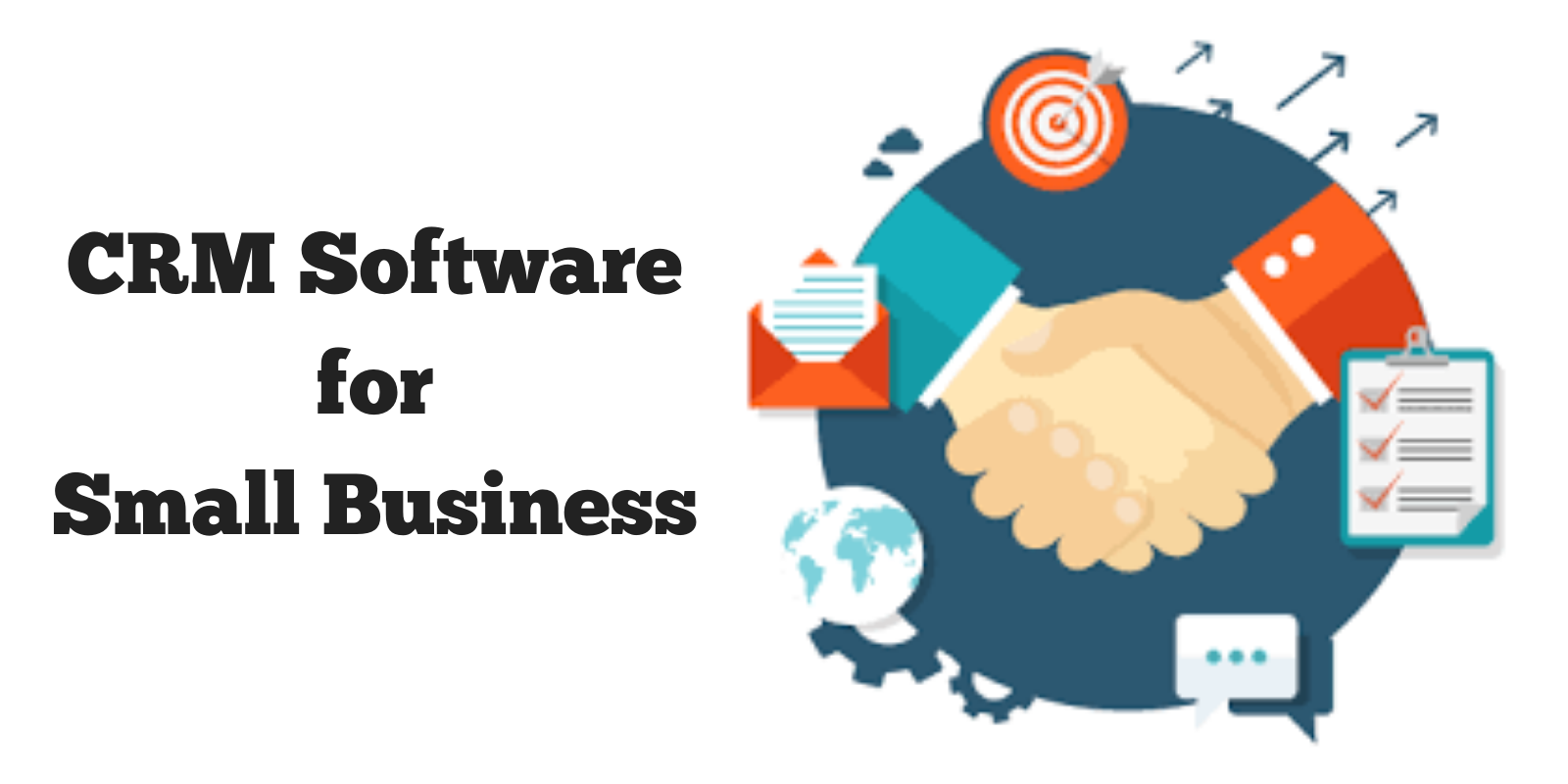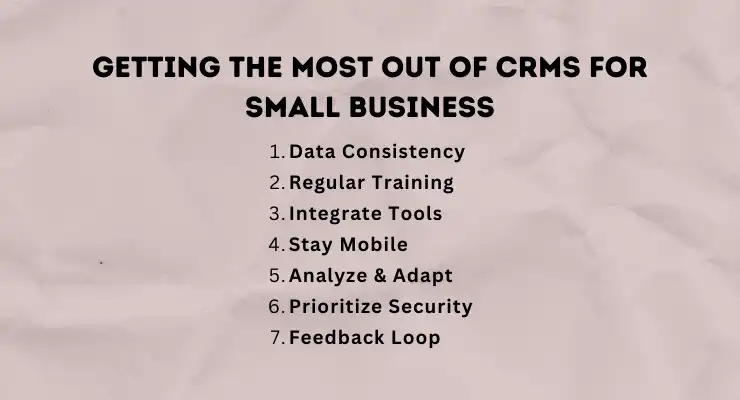
Unlocking the Power of CRM Marketing Newsletters
In today’s fast-paced digital landscape, staying connected with your audience is paramount. One of the most effective tools for nurturing leads, driving sales, and building lasting customer relationships is the CRM marketing newsletter. This comprehensive guide delves into the intricacies of CRM marketing newsletters, exploring their benefits, best practices, and how to craft newsletters that resonate with your target audience. We’ll navigate the essential components, from crafting compelling content to optimizing for deliverability, ultimately equipping you with the knowledge to transform your newsletter into a powerful engine for business growth.
What is a CRM Marketing Newsletter?
A CRM (Customer Relationship Management) marketing newsletter is a regularly distributed email publication sent to a segmented list of subscribers within your CRM system. Unlike generic email blasts, CRM newsletters leverage the data stored in your CRM to personalize content, target specific customer segments, and deliver relevant information that resonates with individual needs and interests. Think of it as a personalized conversation, not just a one-way broadcast.
The core difference between a CRM marketing newsletter and a traditional email newsletter lies in the data-driven approach. CRM newsletters utilize customer data like purchase history, browsing behavior, demographics, and interactions to tailor the content and ensure maximum engagement. This level of personalization significantly boosts open rates, click-through rates, and ultimately, conversions.
Benefits of CRM Marketing Newsletters
Implementing CRM marketing newsletters offers a multitude of advantages for businesses of all sizes. Let’s explore some key benefits:
- Enhanced Customer Engagement: Personalized content keeps your audience engaged and fosters a sense of connection. Customers feel valued when they receive information tailored to their specific needs.
- Improved Lead Nurturing: Newsletters are ideal for nurturing leads through the sales funnel. You can provide valuable content, showcase your expertise, and guide prospects toward making a purchase.
- Increased Sales and Conversions: Targeted promotions, product recommendations, and special offers delivered via newsletters can drive sales and boost conversion rates.
- Strengthened Brand Loyalty: Consistent communication and valuable content build brand loyalty and establish your business as a trusted resource.
- Data-Driven Insights: CRM systems provide valuable data on newsletter performance, allowing you to track open rates, click-through rates, and conversions. This data helps you refine your strategy and optimize future newsletters.
- Cost-Effectiveness: Compared to other marketing channels, email marketing, particularly CRM newsletters, is a relatively cost-effective way to reach your target audience.
- Segmentation and Personalization: CRM allows for highly segmented email lists, enabling you to deliver tailored content to different customer groups.
Key Components of a Successful CRM Marketing Newsletter
Creating a high-performing CRM marketing newsletter involves several key components. Let’s break down the essential elements:
1. Segmentation
Segmentation is the cornerstone of effective CRM marketing. Dividing your audience into distinct groups based on shared characteristics allows you to deliver highly relevant content. Consider segmenting your audience based on:
- Demographics: Age, location, gender, income, etc.
- Purchase History: Products purchased, frequency of purchases, average order value.
- Browsing Behavior: Pages visited on your website, products viewed, content downloaded.
- Lead Source: How they entered your CRM (e.g., website form, social media).
- Engagement Level: How they interact with your previous emails (e.g., open rate, click-through rate).
The more granular your segmentation, the more personalized your newsletters can be, leading to higher engagement and conversion rates. Don’t be afraid to experiment with different segments to discover what resonates best with your audience.
2. Personalization
Personalization goes beyond simply including a subscriber’s name in the greeting. It involves tailoring the entire newsletter content to their individual preferences and behaviors. Here are some ways to personalize your newsletters:
- Dynamic Content: Display different content blocks based on subscriber data. For example, show product recommendations based on their past purchases.
- Personalized Product Recommendations: Suggest products that align with their interests and purchase history.
- Customized Offers and Promotions: Offer exclusive discounts or promotions to specific customer segments.
- Behavioral Triggers: Send automated emails based on specific actions, such as abandoning a shopping cart or viewing a particular product.
Personalization makes your newsletters feel less like mass emails and more like one-on-one conversations, significantly boosting engagement.
3. Compelling Content
The content of your newsletter is the heart of your marketing efforts. It should be valuable, informative, and engaging. Consider the following:
- Provide Value: Offer helpful tips, advice, industry insights, or exclusive content that your audience will find useful.
- Share News and Updates: Keep subscribers informed about new products, services, company news, and industry trends.
- Showcase Your Expertise: Position yourself as a thought leader by sharing insightful articles, blog posts, and case studies.
- Include Visuals: Incorporate high-quality images, videos, and infographics to make your newsletter visually appealing and engaging.
- Use a Clear Call to Action (CTA): Tell subscribers what you want them to do (e.g., “Shop Now,” “Learn More,” “Download the Guide”) and make it easy for them to take action.
Remember, the goal is to provide value and build a relationship with your audience. Focus on delivering content that they will genuinely appreciate.
4. Design and Layout
A well-designed newsletter is crucial for capturing attention and conveying your message effectively. Here are some design best practices:
- Keep it Clean and Simple: Avoid clutter and use a clean, easy-to-read layout.
- Use a Consistent Branding: Maintain your brand’s colors, fonts, and logo throughout the newsletter.
- Optimize for Mobile: Ensure your newsletter is responsive and displays correctly on all devices.
- Use Visual Hierarchy: Guide the reader’s eye with clear headings, subheadings, and bullet points.
- Include a Clear CTA: Make it easy for subscribers to take action.
A visually appealing and well-structured newsletter will make a positive impression and encourage readers to engage with your content.
5. Subject Lines
The subject line is the first thing subscribers see, so it’s crucial to make it compelling. Consider these tips:
- Keep it Concise: Aim for a subject line that is short, sweet, and to the point.
- Personalize it: Use the subscriber’s name or other relevant information.
- Create Urgency: Use words like “Limited Time Offer” or “Don’t Miss Out.”
- Tease the Content: Give subscribers a glimpse of what’s inside the newsletter.
- Avoid Spam Trigger Words: Steer clear of words that might trigger spam filters (e.g., “Free,” “Guarantee,” “Click Here”).
A captivating subject line will increase your open rates and encourage subscribers to read your newsletter.
6. Testing and Optimization
Testing and optimization are essential for maximizing the effectiveness of your CRM marketing newsletters. Here’s what you should do:
- A/B Testing: Test different subject lines, content variations, and designs to see what resonates best with your audience.
- Track Key Metrics: Monitor open rates, click-through rates, conversion rates, and unsubscribe rates.
- Analyze Results: Use the data to identify what’s working and what’s not.
- Refine Your Strategy: Make adjustments to your content, design, and segmentation based on your findings.
- Continuously Improve: Email marketing is an ongoing process. Continuously test, analyze, and refine your approach to achieve optimal results.
Regular testing and optimization will help you refine your strategy and ensure that your newsletters are delivering the desired results.
Crafting a Winning CRM Marketing Newsletter: Step-by-Step Guide
Now that we’ve covered the key components, let’s walk through the process of crafting a successful CRM marketing newsletter:
1. Define Your Goals
Before you start creating your newsletter, define your goals. What do you want to achieve? Do you want to increase sales, nurture leads, build brand awareness, or something else? Having clear goals will help you tailor your content and measure your results.
2. Identify Your Target Audience
Who are you trying to reach? Understand your target audience’s demographics, interests, needs, and pain points. This will guide your content creation and segmentation efforts.
3. Segment Your Audience
Divide your audience into distinct groups based on shared characteristics. This allows you to deliver highly relevant content to each segment.
4. Choose Your Content
Select the type of content that aligns with your goals and resonates with your target audience. Consider offering valuable information, industry insights, product updates, or exclusive promotions.
5. Write Compelling Content
Craft engaging content that is informative, valuable, and easy to read. Use a clear and concise writing style. Incorporate visuals to enhance the overall experience.
6. Design Your Newsletter
Create a visually appealing and well-structured newsletter. Use a clean layout, consistent branding, and clear calls to action.
7. Choose Your CRM and Email Marketing Platform
Select a CRM and email marketing platform that offers the features and functionality you need. Consider factors such as segmentation capabilities, personalization options, automation features, and analytics dashboards. Popular choices include:
- HubSpot: A comprehensive CRM platform with robust email marketing capabilities.
- Salesforce: A leading CRM platform with extensive email marketing integration.
- Mailchimp: A popular email marketing platform with CRM integration options.
- ActiveCampaign: A marketing automation platform with powerful CRM features.
- Klaviyo: An email marketing platform specifically designed for e-commerce businesses.
8. Optimize for Deliverability
Ensure your newsletters reach the inbox by following these best practices:
- Authenticate Your Email Domain: Set up SPF, DKIM, and DMARC records to verify your sender identity.
- Use a Reputable Email Service Provider: Choose an ESP with a good reputation for deliverability.
- Avoid Spam Trigger Words: Steer clear of words that might trigger spam filters.
- Clean Your Email List: Remove inactive subscribers and invalid email addresses.
- Monitor Your Sender Reputation: Keep an eye on your sender score and take steps to improve it if necessary.
9. Test and Refine
Test your newsletter before sending it to your entire list. A/B test different subject lines, content variations, and designs. Monitor your results and make adjustments to optimize your performance.
10. Send and Track
Send your newsletter to your segmented list and track key metrics such as open rates, click-through rates, and conversions. Analyze your results and use the data to refine your strategy.
Examples of Effective CRM Marketing Newsletters
Let’s look at some examples of effective CRM marketing newsletters:
1. Personalized Product Recommendations
An e-commerce store sends a newsletter to a customer who recently purchased a pair of running shoes. The newsletter features personalized product recommendations for running socks, running apparel, and a fitness tracker. This type of newsletter is highly relevant and encourages repeat purchases.
2. Abandoned Cart Recovery
An online retailer sends an automated email to a customer who abandoned their shopping cart. The email includes a reminder of the items left in the cart, along with a special offer or discount to incentivize the customer to complete the purchase. This is a great way to recover lost sales.
3. Welcome Series
A new subscriber receives a series of welcome emails. The first email introduces the company and its products. The second email provides valuable tips and resources. The third email offers a special discount. This type of series helps to build brand awareness and convert new subscribers into customers.
4. Customer Appreciation
A subscription box service sends a newsletter to its loyal customers, thanking them for their support and offering exclusive perks, such as early access to new products or special discounts. This helps to build customer loyalty and encourage retention.
5. Event Invitations
A software company sends a targeted email to a segment of its CRM users, inviting them to an upcoming webinar on a specific feature. This type of newsletter drives engagement and helps customers get more value from their product.
Common Mistakes to Avoid in CRM Marketing Newsletters
While CRM marketing newsletters offer significant benefits, it’s important to avoid common mistakes that can hinder your success. Here are some pitfalls to steer clear of:
- Sending Generic Content: Failing to personalize your content leads to low engagement.
- Ignoring Segmentation: Sending the same newsletter to everyone reduces relevance.
- Poor Design and Layout: A cluttered or poorly designed newsletter will turn readers off.
- Lack of a Clear CTA: Failing to tell subscribers what you want them to do.
- Neglecting Mobile Optimization: Not ensuring your newsletter displays correctly on mobile devices.
- Ignoring Deliverability Best Practices: Failing to authenticate your email domain can lead to low deliverability rates.
- Not Tracking and Analyzing Results: Without tracking, you can’t optimize your strategy.
- Over-Promoting: Always focusing on selling without providing value.
- Sending Too Frequently: Bombarding subscribers with emails can lead to fatigue and unsubscribes.
By avoiding these common mistakes, you can significantly improve the effectiveness of your CRM marketing newsletters.
Measuring the Success of Your CRM Marketing Newsletter
To ensure your CRM marketing newsletters are performing effectively, it’s crucial to track and analyze key metrics. Here are the essential metrics to monitor:
- Open Rate: The percentage of subscribers who opened your email.
- Click-Through Rate (CTR): The percentage of subscribers who clicked on a link in your email.
- Conversion Rate: The percentage of subscribers who completed a desired action (e.g., made a purchase, filled out a form).
- Unsubscribe Rate: The percentage of subscribers who unsubscribed from your email list.
- Bounce Rate: The percentage of emails that were not delivered (either soft or hard bounces).
- List Growth Rate: The rate at which your email list is growing.
- Return on Investment (ROI): The revenue generated from your email marketing efforts compared to the cost.
By tracking these metrics, you can assess the performance of your newsletters and identify areas for improvement. Use the data to refine your strategy, optimize your content, and maximize your results.
The Future of CRM Marketing Newsletters
The landscape of email marketing is constantly evolving, and CRM marketing newsletters are no exception. Here’s what the future holds:
- Increased Personalization: Expect to see even more sophisticated personalization techniques, such as dynamic content, AI-powered recommendations, and hyper-personalized journeys.
- Automation and AI: Marketing automation and artificial intelligence will play an increasingly important role, enabling you to send highly targeted emails at the right time.
- Enhanced Segmentation: Expect to see more advanced segmentation options, allowing you to target even smaller and more specific customer groups.
- Focus on Value: The emphasis will be on providing valuable content that resonates with subscribers’ needs and interests.
- Integration with Other Channels: CRM marketing newsletters will be integrated with other marketing channels, such as social media and SMS, to create a seamless customer experience.
- Emphasis on Privacy: Data privacy will become even more critical, and businesses will need to be transparent about how they collect and use customer data.
Staying ahead of these trends will be crucial for businesses that want to leverage the power of CRM marketing newsletters. By embracing innovation and focusing on providing value, you can create newsletters that drive engagement, build customer relationships, and generate significant results.
Conclusion: Harnessing the Power of CRM Marketing Newsletters
CRM marketing newsletters are a powerful tool for businesses looking to build customer relationships, drive sales, and achieve sustainable growth. By understanding the key components, following best practices, and continuously testing and optimizing your approach, you can create newsletters that resonate with your target audience and deliver exceptional results.
Remember to focus on personalization, segmentation, and providing valuable content. Embrace the latest trends and technologies, and always prioritize the needs and interests of your subscribers. With a well-crafted CRM marketing newsletter strategy, you can transform your email marketing efforts into a driving force for business success. Start crafting your winning CRM marketing newsletters today and watch your business flourish!


